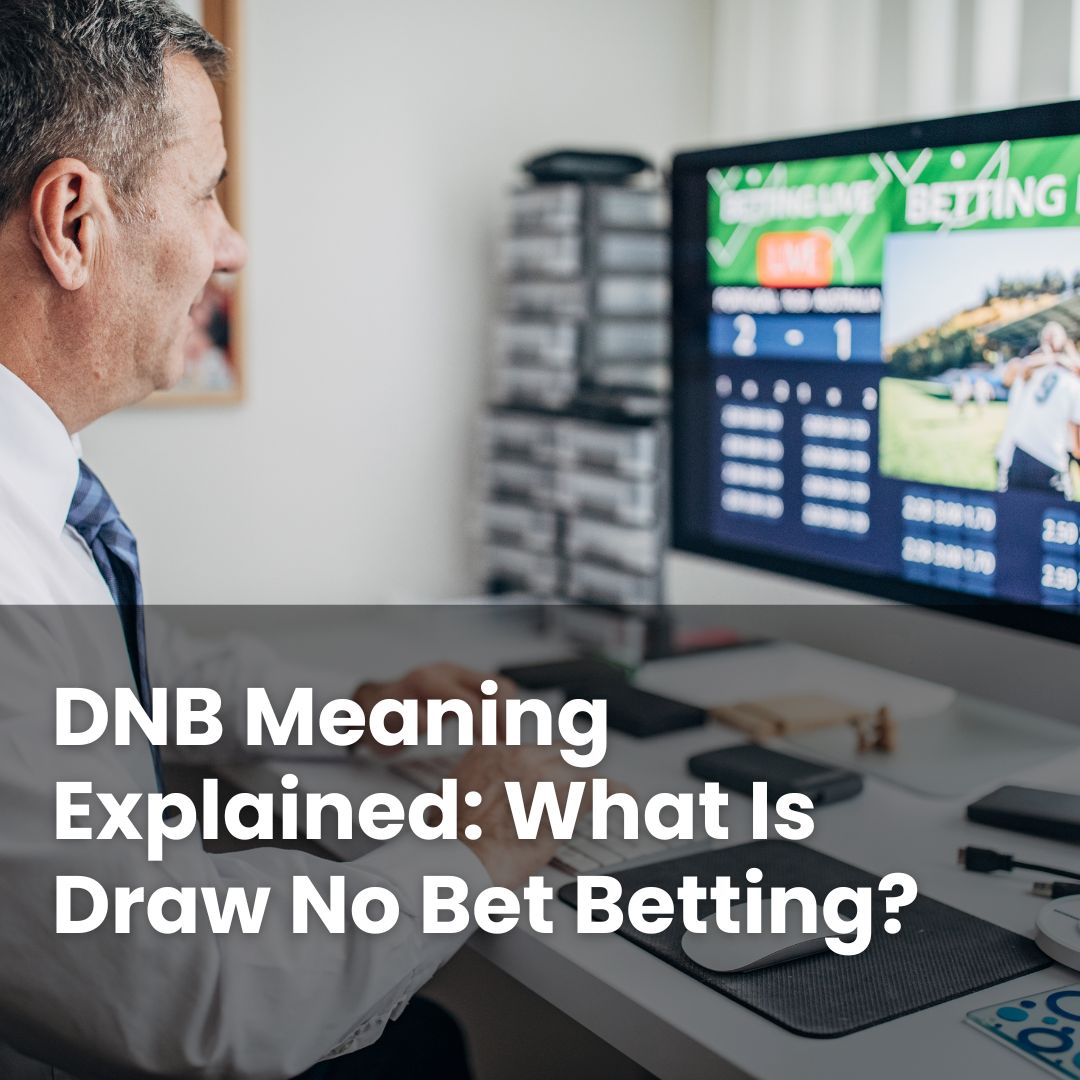If you’ve come across the term Draw No Bet or spotted the letters DNB when scrolling through football betting markets, you might be wondering what it actually means. With so many options available, it can feel a bit much at first.
DNB is one of the more common football markets. It sits alongside the standard match result and a few others, but it works in its own way. Understanding it could help you read a bet slip more confidently.
Below, we explain DNB without any complicated jargon, how it works, when it could potentially be useful, and how it compares to similar markets. Read on to learn more.
What Does Draw No Bet Mean in Football Betting?
Draw No Bet, or DNB for short, removes the draw from the equation. Instead of three possible outcomes in a football match, you are left with two: home win or away win.
If the team you back wins, your bet pays out at the odds you took. If the match ends in a draw, your original stake is refunded, so there is no win or loss. If your selection loses, the bet is settled as a loss. Because the draw is taken out, DNB odds are usually shorter than standard match result prices.
A quick example might help. If you back the home team DNB at 11/10 with a £10 stake, a home win returns £21 in total. If it finishes level, you get your £10 back. If the away side wins, the £10 stake is lost.
If you do decide to try your hand at sports betting, remember to do so responsibly and within your means; never wager more than you can afford to lose.
How Does a Draw No Bet Wager Work?
With DNB, you choose either the home or the away side to win in normal time. There are three possible settlements, and only one of them returns nothing either way.
- Your team wins, you are paid out at the odds taken.
- The match is a draw, your stake is returned to your account.
- Your team loses, the stake is lost.
Odds and layouts vary across betting sites. Some list DNB alongside the main match result market, so it could potentially be worth double-checking the selection name on your slip before confirming. If you are unsure how a market is settled, the site’s rules page usually explains it.
Discover The Best Online Casinos
Browse our list of top-recommended casino sites, read reviews from real players & be the first to get access to the latest casino bonuses
When Should You Use a Draw No Bet Market?
DNB can make sense when a match looks tight. That might be a local derby where nerves often show, a fixture between well-organised defences, or a game late in the season where neither side wants to overcommit. In these situations, the draw feels realistic, and DNB gives cover without forcing you to back the draw outright.
It can also suit cases where you rate one team to edge it but want protection against a stalemate. For example, a slight away favourite with a strong recent record might appeal DNB if the venue is historically tricky. Team news, recent form and tactical approach matter here, so a quick scan of a match preview is time well spent.
The trade-off is the price. Because the draw does not beat you, DNB odds are generally shorter than the standard win market.
What Are the Advantages of Draw No Bet Betting?
The main advantage is simple: if the match ends level, your stake comes back. That can make DNB a steadier option in fixtures where neither side is likely to run away with it.
It also gives a clear way to back a marginal favourite without taking on the full risk of a three-way market. Think of a derby that often ends 1-1. If you believe the home side has a slight edge but a draw is very possible, DNB lets you support that view while limiting exposure to the draw.
There is a cost for that cover, which is reflected in the shorter odds compared to a straight win bet. Whether that trade-off is worth it depends on the match and your view of how it will be played.
What Is the Difference Between Draw No Bet and Double Chance?
DNB and Double Chance both reduce the risk of a three-way market, but they do it differently.
With DNB, you pick one team to win. A win pays, a draw refunds, and a loss loses. With Double Chance, you cover two of the three possible outcomes in a single bet, such as home win or draw, away win or draw, or home win or away win. Because Double Chance wins in more scenarios, the odds are usually shorter than DNB.
Put simply, DNB pays if your team wins and refunds on a draw, while Double Chance often pays on a draw as well. You will sometimes see Double Chance written as 1X, X2 or 12 on the coupon. Choose the one that fits how strongly you feel about the team you are backing and how much cover you want.
Can You Use Draw No Bet in Accumulators?
Yes, DNB can be included in most accumulators. An accumulator, or acca, groups several picks into one bet that pays out only if every leg is settled positively for you.
If a DNB leg ends as a draw, that selection is usually made void and the acca continues without it. For example, a four-leg acca becomes a treble if one DNB match finishes level. The overall price adjusts because the voided leg no longer contributes to the combined odds. If a DNB leg loses, the whole acca is settled as a loss, just like any other market.
Bookmakers explain how void legs affect returns in their rules, so it could potentially be worth a quick look before you potentially place your bet. Always keep responsible gambling practises in mind.





